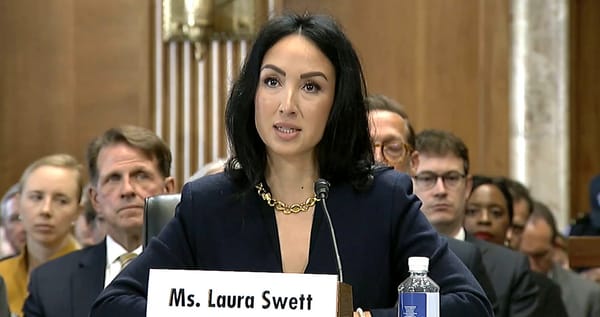Chris Collura: The Time is Right for Federal Agencies to Upgrade Network Infrastructure
The federal government has always been one of the largest consumers of broadband and that has become especially true with the transition of most federal workers to a telework status. The federal government continues an upward trajectory as guidelines and budgets push for a digital transformation tha
Broadband Breakfast

The federal government has always been one of the largest consumers of broadband and that has become especially true with the transition of most federal workers to a telework status. The federal government continues an upward trajectory as guidelines and budgets push for a digital transformation that would put agencies on par with the broader market.
That said, legacy information technology systems still drive much of the federal government. But federal agencies, facing requirements to become data-driven, are expediting parallel efforts to onboard next-generation technologies to make operations smarter, faster and more efficient. They are embracing cloud and data analytics, artificial intelligence and machine learning, and augmented and virtual reality.
The challenge for federal agencies moving through digital transformation is to not build the house before laying the foundation. In other words, too many are trying to onboard next-generation technologies without first upgrading outdated network infrastructure. Now is the perfect time to upgrade with innovations in both wired and wireless infrastructure.
Why infrastructure matters
Infrastructure enables connected technologies, and there is no reason to on-board technologies built for high-speed connections if they must run on outdated cable and fiber, or wireless access points and ethernet switches built for 3G.
Whether an agency is ordering 5G and Wi-Fi 6 devices this year, next year, or the year after, all agencies will transition, and they need the right network infrastructure to make it happen. Well-designed network infrastructure, using the best hardware, can last 10 years – that’s more than the lifespan of many technologies it supports. That’s a good return on investment.
Let’s look at some broadband trends and priorities driving the federal government.
Cellular
5G devices are just beginning to hit the market and are likely to be the standard in cellular by the end of next year. Fast, low-latency connections are becoming the norm and are necessary to realize device capabilities and security. The Department of Defense and others already have 5G test pilots in place.
While early testing for fifth-generation cellular focused on outdoor venues such as sports arenas, indoor wireless technologies have improved to the point that most federal agencies can use these to upgrade infrastructure in large buildings where wireless signals are the weakest. To get signals through modern building materials such as energy-saving windows, infrastructure can be upgraded with distributed antenna systems (DAS) or small-cell technology. These include wireless transmitters and receivers designed for network coverage in small spaces, and the capabilities are more readily available, affordable, and easier to scale than ever before. This type of architecture allows for clear connections anywhere in the building.
Wi-Fi
Wi-Fi isn’t just an add-on convenience in networking. Mobility is ubiquitous. Employees need and expect to stay connected whether they are outdoors or in large office buildings, as do visitors to federal sites.
Like 5G, the industry is working hard to roll out Wi-Fi 6 devices this year. The Federal Communications Commission in April voted to open the 6 GHz band, giving 1,200 MHz of radio spectrum to unlicensed use, and five times more broadband for Wi-Fi. That’s the perfect opening for Wi-Fi 6. With the right infrastructure, federal agencies will find Wi-Fi speeds about 2 ½ times faster than they currently have.
CBRS
Another development in indoor wireless is the new Citizens Broadband Radio Service which is a shared spectrum in the 3.55 – 3.7 GHz range. CBRS improves wireless coverage and capacity, and allows agencies to create private networks, making it ideal for in-building use. For federal agencies, this means retaining ownership of sensitive data so that it doesn’t go through a third-party service provider.
Wired
While recent innovation has focused on wireless, wired infrastructure remains the cornerstone of network capacity and performance in federal agencies. Cabling and data-fiber architecture, just like wireless access points and switches, need to be upgraded to realize the full capabilities of cloud and data centers at the edge of the network.
Another innovation in networking is power-over-ethernet (PoE) capabilities. PoE allows ethernet cables to supply power to network devices over data cables. This allows PoE-capable devices, such as digital security cameras, to become power sources. PoE architecture also can be used to expand the distance for IoT sensor devices in “smart cities” or “smart bases.”
All of these wired and wireless capabilities move federal agencies closer to full digital transformation. As agencies embrace data-driven decision making and the possibilities of technologies such as 5G, Wi-Fi 6 and CBRS, they must consider the role of network infrastructure in realizing their capabilities. Network infrastructure is the driver for everything else. The earlier agencies upgrade their infrastructure, the better their return on IT investments will be.
Chris Collura is the Vice President of Federal Sales for CommScope, a network infrastructure provider company based in North Carolina. This piece is exclusive to Broadband Breakfast.
BroadbandBreakfast.com accepts commentary from informed observers of the broadband scene. Please send pieces to commentary@breakfast.media. The views reflected in Expert Opinion pieces do not necessarily reflect the views of Broadband Breakfast and Breakfast Media LLC.









Member discussion